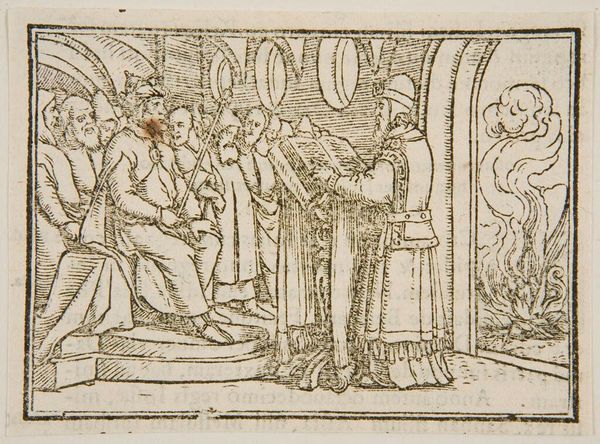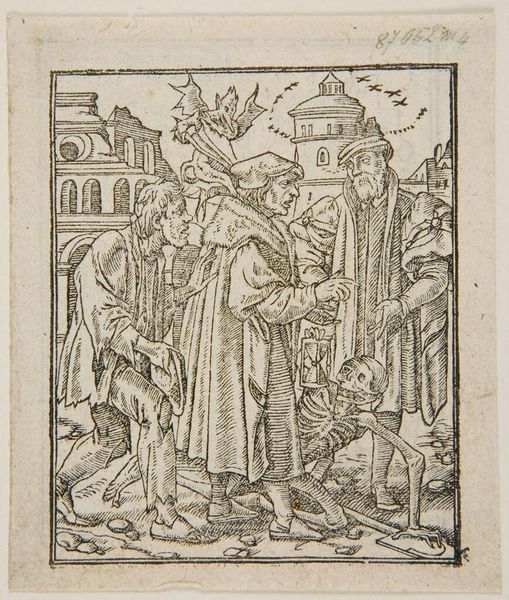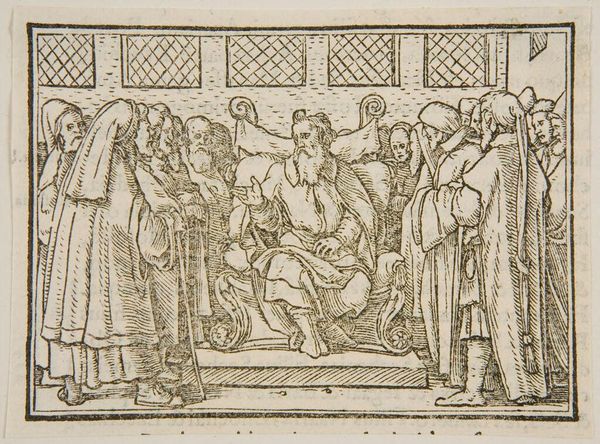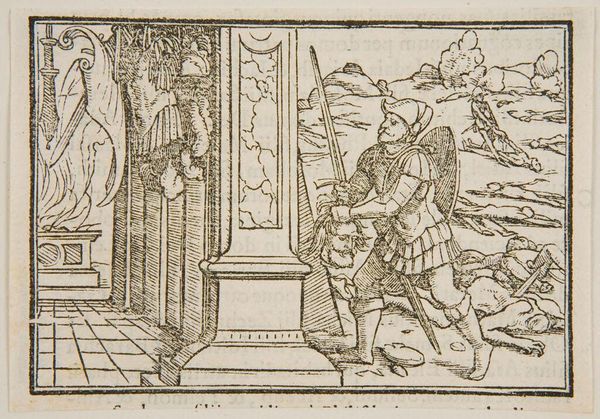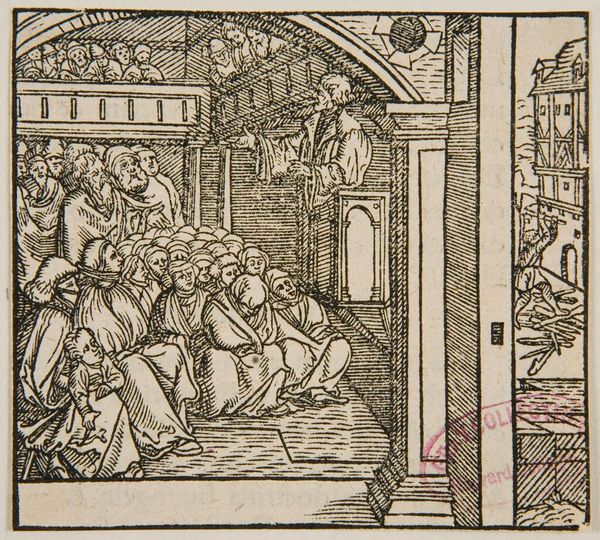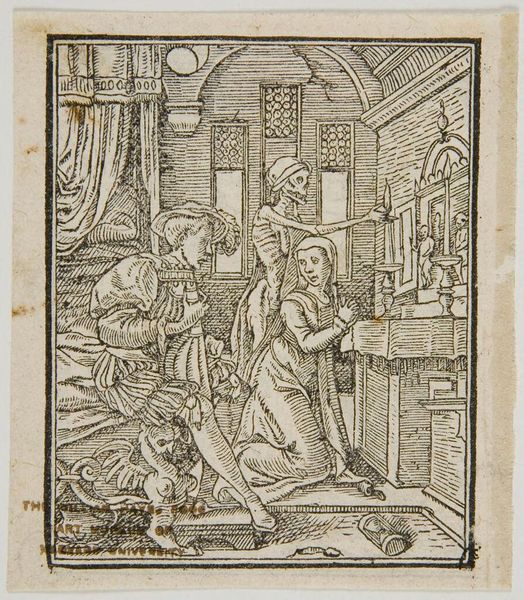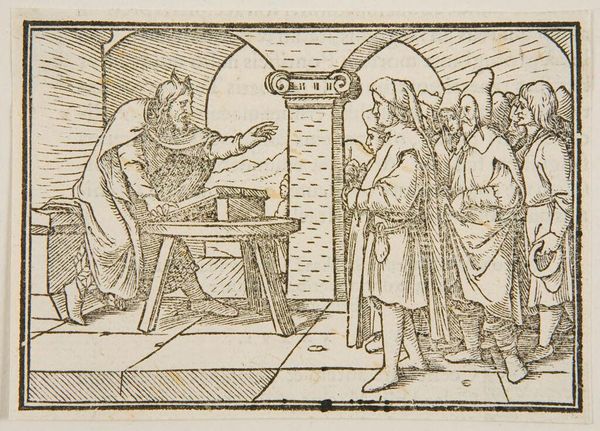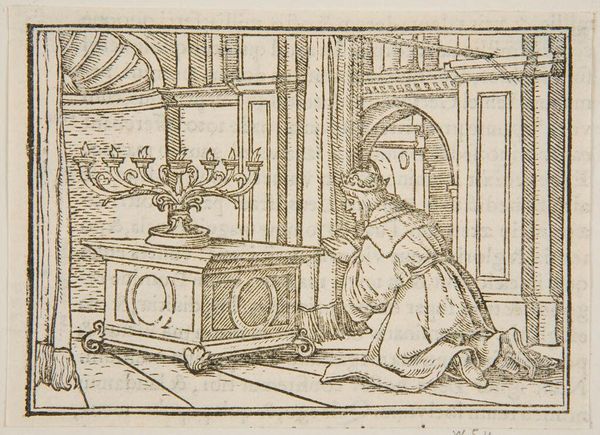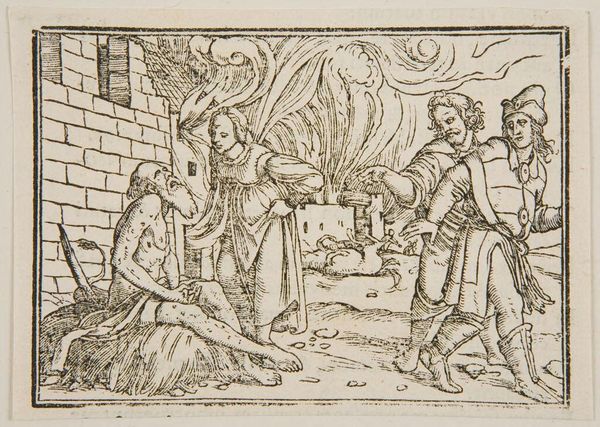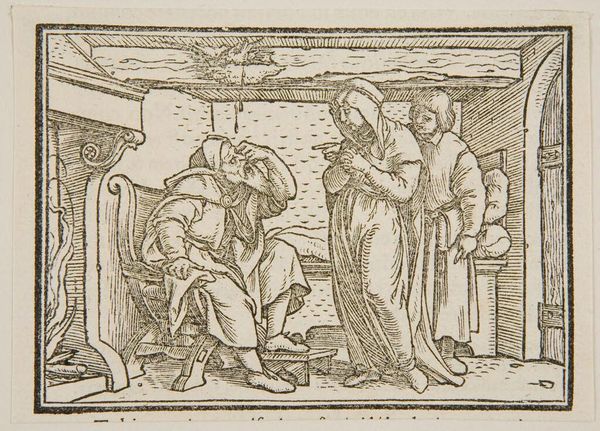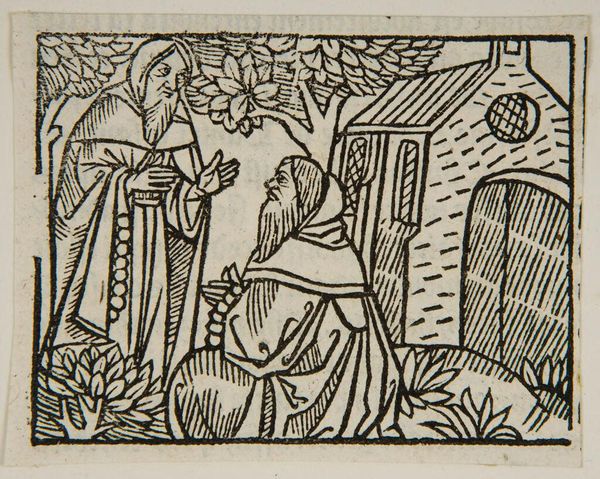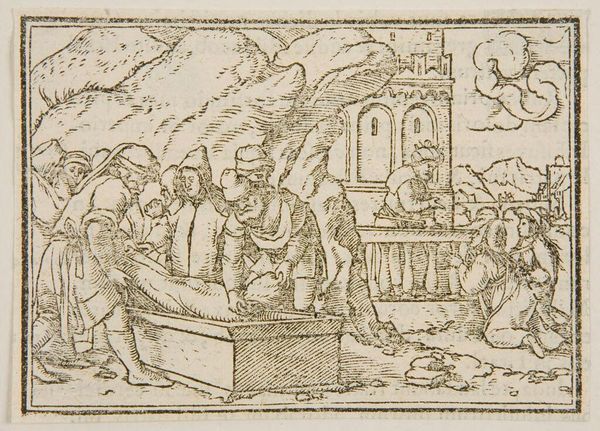
Copyright: CC0 1.0
Curator: Holbein's "2 Chron. VI" strikes me as a study in controlled chaos, that stark woodcut contrasting fervent prayer with looming fire. Editor: Indeed. Looking closely, the stark lines point to the labor-intensive process, the craft necessary to disseminate these biblical scenes to a wider public through printmaking. Curator: Absolutely. The image evokes the fraught political and religious landscape of the Reformation; it’s a visualization of faith in a time of upheaval, reflecting anxieties about religious authority. Editor: And consider the role of patronage in Holbein's career. How did the social and economic forces of his time shape the accessibility and reception of such potent imagery? Curator: The scale is intimate, yet the content monumental. It’s a reminder that even small, reproducible artworks can carry immense cultural and political weight. Editor: I find myself drawn to the material reality of the woodcut itself—the paper, the ink, the physical act of creation as a testament to both faith and the power of the printed image. Curator: It's remarkable how Holbein captured the fervor of the scene with such simple means. Editor: Yes, leaving us to consider the lasting influence and meaning of these visual tools of cultural and religious expression.
Comments
No comments
Be the first to comment and join the conversation on the ultimate creative platform.
